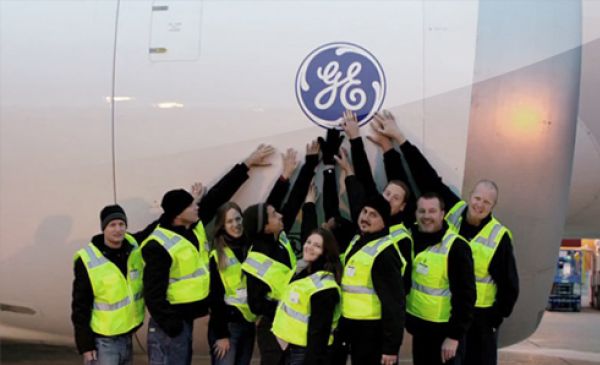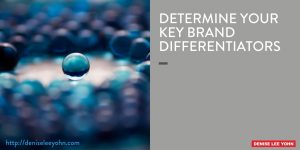Jun Group explains how value exchange ads consistently deliver the best results in the industry, especially on mobile.
Jun Group explains how value exchange ads consistently deliver the best results in the industry, especially on mobile.
The session provided a “cliff notes” summary of both reports, with an emphasis on suggested action steps for advertisers.
What brands are doing to show their support for the military and the nation’s veterans through their marketing and good works, and what other brands can do to get involved.

A 2012 LinkedIn White Paper, ‘Why Your Employer Brand Matters’, found that a strong employer brand (as indicated by an individual having a positive impression of a company) is twice as likely to be linked to job consideration as a strong overall brand.
When a person considers working for your organization, this matters. It’s an important component of your brand overall, and it comes to the fore when it’s being viewed in the context of the job seeker – and both existing and past employees, who have significant influence on it.
Like your overall brand, your reputation as an employer isn’t fully within your control. The best you can do is influence it positively through clarity, consistency, coherence and – yet again – delivering on what you say. What you say, how you say it and where you say it – and what you do, how you do it, when and where you do it – have significant influence. Whether it’s online, in your retail environment, in your offices and workspaces, your advertising, articles in the press, investor relations, word of mouth, social media, internal communications, employee engagement, HR policies and practices, change management – all of these things combine to create a perception of what your organization is like as a place to work.
It’s also important to be clear on terminology – there are many confusing variations on this theme. The way I recommend talking about it, if you need to rely on specialist terms, is as follows. Your ‘employer brand’ or ‘talent brand’ is your reputation in the talent market that you seek to influence. It exists in the minds of your audience. You don’t craft an ‘employer brand’ as a project – it is the outcome of a variety of activities.
On the other hand, you do craft how you want to be perceived – your ‘employment value proposition’ or ‘EVP’. Some call it an employer value proposition (too focused on the organization’s perspective) and some call it an employee value proposition (too focused on the individual employee). So for that reason I recommend keeping it balanced since it is a reciprocal arrangement shared by the two parties. It’s the promise of the experience you will share as employer and employee.
There are many providers of so-called ‘employer branding’ services who seek to help refine and express an organization’s EVP in an effort to influence their talent brand. Often these are commissioned by HR departments – ideally with some coordination and collaboration with marketing and brand management. The ultimate aim is to express what the employment experience is within the context of the overall brand, and to do so in a manner that is authentic to your organization; relevant to your audience; and differentiating from your competitors for talent:
The other risk is looking at the employment value proposition as applying to the external audience only. It should instead cover the entire employee experience. Since your organization is not only promising an experience externally to the talent marketplace, it has to be delivering on that promise in everything it says and does internally and with alumni. It is part and parcel of managing and engaging the talent an organization already has – and seeks to develop and retain.
Recruitment Experience
How you attract and assess potential talent is a critical part of delivering on your EVP and positively influencing your talent brand. With talent shortages proving to be a persistent challenge and barrier to growth even in times of economic uncertainty the world over, getting this right is no longer a back-office function. It is a critical driver of performance and growth.
What is critical to understand is that your talent acquisition strategy should not only be about finding candidates – it needs to be about finding the right candidates. If you get your EVP right, a big part of its role is actually to deflect interest from candidates who are not right for your organization, and who by entering your talent acquisition process will consume your time and resources. The ultimate goal is fewer applications of higher quality.
Companies with a weaker employer brand report a cost per hire that is almost double that of companies with a strong employer brand.
The talent marketplace is an increasingly complex ecosystem. The traditional economic assumption that talent markets are local is being turned on its head. It’s essential, therefore, that your recruitment experience is completely integrated and that you are managing it across as many relevant and effective touch points as possible. This includes:
Every communication relating to talent (and potentially relating to talent) needs to be aligned to your brand and your EVP – so that, wherever you are interacting with a stakeholder who has the potential to influence your reputation as an employer, you are forming a coherent, credible, clear picture. If you are telling different stories to different stakeholders in different times and places, it will be apparent to the talent market – and will reduce your effectiveness in attracting the best. How you go to the market for talent speaks volumes to who you are as an organization and how you manage your business.
Also be very aware of the people you do not offer employment to. They too have an influence on your reputation. Think of every applicant as a potential brand advocate – even those you say ‘no’ to should have a positive experience and, while they might not become a net promoter, you can at least prevent them from being a detractor. Keep a close eye on your recruitment agencies when it comes to this – they can often cause significant damage without your even knowing about it.
Excerpted from: Brand and Talent by Kevin Keohane, in partnership with Kogan Page publishing.
The Blake Project Can Help: The Brand Positioning Workshop
Branding Strategy Insider is a service of The Blake Project: A strategic brand consultancy specializing in Brand Research, Brand Strategy, Brand Licensing and Brand Education
FREE Publications And Resources For Marketers
By Lorrie Foster, Director, Global Corporate Volunteer Council, International Association for Volunteer Effort Over one million migrants and refugees left their homes for Europe last year and hundreds of thousands more poured in this year, creating the worst migration crisis since World War II. Many of the refugees are fleeing the brutal civil war in […]
Differentiation may quite possibly be the top priority in brand development. In today’s competitive business environment, simply being better than other brands no longer creates a sustainable advantage. Your brand must be different. As you scale-up your brand, it is critical to identify and develop your key brand differentiators.
I’ve provided this blog post series, Scale-Up Your Brand, to help if you are looking to grow from a mid-sized business into a large enterprise or from a later-stage start-up to post-IPO. I’ve laid out the steps that I usually take with my clients:
We are now at the final step, determining your key brand differentiators.
A brand differentiator is a unique feature, aspect, and/or benefit of your product or service that sets it apart from competing brands. A single differentiator or a robust set of them form the basis for how you establish competitive advantage.
That’s because our brains are hard-wired to notice differences. Take a look at the image below and see how you automatically focus on the red match.

Your brand must stand out from all the other choices your customers have, like the red match.
It’s been over 8 years since brand guru Jack Trout popularized the phrase “Differentiate or Die,” with his book by the same title. The need for brands to establish meaningful, sustainable differentiation has only increased in the time that has passed. People have more choices — and more attention spans — than ever before. That combination makes brand differentiation more difficult — and more important.
The best way to establish brand differentiation is to leverage one or more key differentiators.
Sometimes your key brand differentiator(s) is obvious and definitive. In other cases. you may have many possible differentiators and you need to prioritize them. I recommend identifying three key differentiators and designating the lead one among the three.
Here’s how:
1. Make a list of all the things that do or could differentiate your brand – consider the following:
2. Rate each differentiator on the following dimensions:
3. Use the ratings to prioritize the top 3-5 differentiators (look for the highest scores on all four dimensions) and identify the lead one.
A couple of tips:
I hope this Scale-Up Your Brand series has provided you with the tools, methods, and information that will help you grow and evolve your business. I would love to hear your success stories — as well as your questions and challenges. Please use the Comments section below or contact me here. And, if you’re interested in getting the e-book Scale-Up Your Brand, please subscribe to my newsletter so you will be notified as soon as it becomes available.
related:
The post scale-up your brand — determine your key brand differentiators appeared first on Denise Lee Yohn.

Are you an inventor or filmmaker? A scientist or entrepreneur? Do you have a unique approach to your work that is worth sharing with the world? Could you benefit from the TED platform and the support of a dynamic global community of innovators? If yes, you should apply to be a TED Fellow.
This year, TED is looking for new, extraordinary thinkers from around the world to join the Fellows program at the upcoming TEDGlobal 2017 conference in Arusha, Tanzania.
TED Fellows are a multidisciplinary group of remarkable individuals who are chosen through an open but rigorous application process. Each TED conference, we select a class of twenty Fellows based on exceptional achievement, strength of character and innovative approaches to tackling the world’s toughest problems.
Do you think you have what it takes? Apply by November 13 at go.ted.com/tedfellowsapply.
The second major TED conference in Africa, TEDGlobal 2017 will focus on the challenges and opportunities facing the continent. We encourage all talented innovators in their fields – science, art, technology, entrepreneurship, film and beyond – to apply to become a TED Fellow, especially those working on the African continent. If selected, you will attend the TEDGlobal 2017 conference, and participate in a Fellows only pre-conference designed especially to inspire, empower and support your work. Fellows will also deliver a TED talk at the conference, to be filmed and considered for publication on TED.com.
The TED Fellows program is designed to catapult your career through transformational support like coaching and mentorship, public relations advice for sharing your latest projects, hands on speaker training – and most importantly, access to the vibrant global network of the other 400 Fellows from 90 countries. We will select twenty TEDGlobal 2017 Fellows based not only on what applicants have accomplished so far, but also on their character and grit, their collaborative spirit, and their potential to break barriers as they build their careers.
The online application includes answers to general questions, short essays and three references. Only those aged 18 and older should apply. If selected, Fellows must reserve August 21 – September 1, 2017 on their calendars for the TEDGlobal 2017 Conference in Arusha, Tanzania.
Think this is right for you? Apply now.
More information
Questions?: ted.com/participate/ted-fellows-program
Visit: ted.com/fellows
Follow: @TEDFellow
Like: facebook.com/TEDFellow
Read: medium.com/ted-fellows
As usual, the TED community has lots of news to share this week. Below, some highlights.
Why there are still so few women at the top. Leanin.org, the organization created by Facebook COO Sheryl Sandberg to help empower women, released its second annual Women in the Workplace report. The news is not good: Women have less access to senior leadership (even though sponsorship by senior leaders is seen as critical to career advancement); women negotiate as often as men for a promotion or increased compensation but receive more pushback; and women are less likely than men to receive feedback when they ask for it. Conducted with the consulting firm McKinsey & Company, the report is based on pipeline data and a survey of HR practices from 132 companies, employing a combined total of 4.6 million Americans, as well as the responses of 34,000 employees to a survey on gender, job satisfaction, ambition and work-life issues. (Watch Sheryl’s TED Talk)

How anonymous companies find loopholes in London’s alternative stock market. London’s Alternative Investment Market (AIM) is known for loose regulations and brokers with conflicts of interest — which means that suspicious companies sometimes slip by. On BBC Radio’s “File on 4,” small shareholders explained how they lost money on AIM after investing in foreign companies that then de-listed and disappeared. What’s worse is that many of these companies are closer to home than investors realize. One example: British cricketer Phil Edmonds’ company, Sable Mining. Global Witness, the watchdog organization started by TED Prize winner Charmian Gooch, investigated Sable Mining, and uncovered anonymous offshore accounts, bribes to Liberian officials and shady business practices. Global Witness warns that self-regulated markets like AIM allow companies like Sable Mining to hurt small shareholders and businesses. According to Global Witness, anonymous companies should raise flags for everyone, including AIM, and stricter regulations should be put in place to protect investments. (Watch Charmian’s TED Prize Talk)
A new definition of ‘better off.’ “We live in tenuous times. In fact, for the first time in American history, the majority of parents do not think that their kids will be better off than they were. This is true of rich and poor, men and women,” says Courtney Martin in her talk at TED2016. But rather than a doomsday message, Martin’s is a call to reimagine. In her TED talk and her new book The New Better Off, released on September 13, Martin asks readers to redefine “better off” and imagine a new American Dream, one that reevaluates how we think we should live, work, celebrate, and mourn. (Watch Courtney’s TED Talk and read an excerpt from the book on our Ideas blog)
New insight on CRISPR enzyme C2c2. Scientists have known about CRISPR enzyme C2c2 for a few months, but research published in Nature by Jennifer Doudna and colleagues has added a new layer to our understanding of the system, which targets RNA instead of DNA. While it was previously thought that C2c2 had only one RNA cleaving function, the researchers showed that it actually has two. One allows C2c2 to cut its RNA target and the other allows it to process its guiding CRISPR RNA. (Watch Jennifer’s TED Talk)
The race to 2020. While Christiana Figueres is no longer Executive-Secretary of the UN Framework Convention on Climate Change, it doesn’t mean that her fight to save the planet is over. Figueres is now at the helm of Mission 2020, a collaborative venture with the ambitious aim to surpass the goals of the Paris climate agreement and bring global emissions into decline by 2020. The group will work with stakeholders to unite the public and private sector in order to deliver a net-zero emissions pathway. (Watch Christiana’s TED Talk)
Have a news item to share? Write us at [email protected] and you may see it included in this weekly round-up.
Creative ad agency DDB Oslo teamed up with Tilt, drone operators to create this new ad for Telia Norway. In it we see the drones assemble a tiered cake, frosting and decorations, and blow out the candle all of which is done without the help of any humaniods.
CREDITS:
Ad Agency: DDB, Oslo, Norway
Below, see how drone cake Telia was made.
<!– Great-Ads Text Resp. –>
(adsbygoogle =
By Alice Korngold, Co-Editor, Giving Thoughts, and author, A Better World, Inc.: How Companies Profit by Solving Global Problems…Where Governments Cannot Prior to the Clinton Global Initiative’s (CGI) first Annual Meeting in 2005, many of us had spent a couple of decades helping to build problem-solving partnerships between businesses and nonprofits. From its first meeting […]